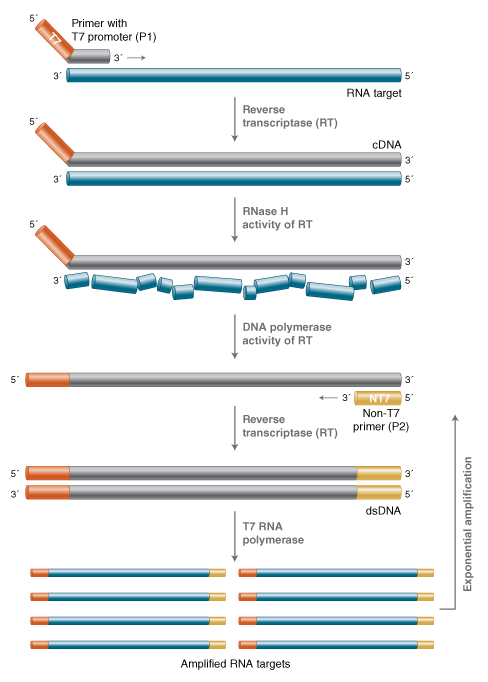ENTEROBACTERIACEAE
Most numerous facultative anaerobes in the human gut comprising approximately 109/g of feces. Outnumbered only by Gram-negative anaerobes. Genera of the family Enterobacteriaceae share features that distinguish them from other families; can be distinguished from other by biochemical tests.
Genus Escherichia
Genus contains only one species of medical importance: E. coli.
Escherichia coli:
Characteristics:
Gram-negative rod; motile; with or without capsule; non-fastidious, facultative anaerobes; bile tolerant.
Transmission:
Normal habitat is gut of man and animals; may colonize lower end of urethra and vagina. Spread is by contact and ingestion (fecal-oral route); may be food-associated; may be endogenous. Possesses O (somatic), H (flagellar), K (capsular) and F (fimbrial) antigens, which can be used to characterize strains by serotyping.
Diseases:
- Urinary tract infection
- Diarrhea
- Neonatal meningitis
- Septicemia
- Wound infection
Laboratory Diagnosis:
Sample Collection:
- Faeces for culture and toxin detection in case of diarrhea
- Urine for microscopy and culture in case of UTI
- Pus for culture in case of Wound infection
- C.S.F. for microscopy and culture in case of neonatal meningitis
- Blood for culture in septicaemia
Methods for Identification of Organism:
- Microscopy: E. coli is Gram negative, motile rod.
- Culture: Nutrient agar, MacConkey agar
- MacConkey agar: Colonies are large, bright pink coloured and may be umbilicated.
- Biochemical Reactions: See the table bellow.
- Antibiotic Sensitivity Test
Genus Proteus
Genus contains several species, of which two are of medical importance: Pr. mirabilis and Pr. vulgaris.
Characteristics:
Gram-negative rod; non-fastidious; facultative anaerobe; bile tolerant; likes alkaline pH; characteristic unpleasant odor; highly motile and swarms on some media.
Transmission:
Normal habitat is human gut, soil and water. Contact spread; infection often endogenous and also found in community.
Diseases:
- Urinary tract infection
- Hospital-acquired wound infection
- Septicemia
- Pneumonia in the compromised host.
Laboratory Diagnosis:
Sample collection: Depending upon site of infection, specimen include urine, pus and sputum
Methods for identification of organism:
- Microscopy: They are Gram negative, motile, non capsulated, pleomorphic rods
- Culture: Blood agar, MacConkey agar.
- Blood agar: Exhibits characteristic swarming growth.
- MacConkey agar: Colonies are colorless or pale. Swarming is absent due to bile salt in media.
- Biochemical Reactions: See the table.
- Antibiotic Sensitivity Test
Genus Klebsiella
Species of the genera Klebsiella are rarely associated with infection except as opportunists in compromised patients.
Characteristics:
Gram-negative rods, sometimes capsulate (usual for Klebsiella), non-fastidious growth requirements. Capable of aerobic and anaerobic respiration.
Transmission:
Normal habitat is gut of man and animals and moist inanimate environments, especially soil and water. Infection may be endogenous or acquired by contact spread. Klebsiella have remarkable capacity for survival on hands. Various methods of epidemiologic fingerprinting available for outbreaks of hospital-acquired infection.
Diseases:
Opportunist infections in the compromised host. Urinary and respiratory tracts most common sites of infection. Distinction between colonization and infection can be difficult.
Laboratory Diagnosis:
Sample Collection: Depending upon site of infection, specimen include urine, pus and sputum
Methods for Identification of Organism:
- Microscopy: Gram negative, non- motile, capsulated rods
- Culture: Nutrient agar, MacConkey agar
- MacConkey agar: Colonies are large, circular, Pink, dome shaped and mucoid.
- Biochemical Reactions:
|
TSI |
IMVIC |
Urease | ||||||
|
Slant/Butt |
Gas | H2S | Indole | Methyl Red | Voges-Proskauer |
Citrate |
||
| E.coli |
Acid/Acid |
+ | – | + | + | – | – |
– |
| Klebsiellae |
Acid/Acid |
+ | – | – | – | + |
+ |
+ late |
| Pr.mirabilis |
Alkaline/Acid |
+ | + | – | + | – | + |
+ |
| Pr.vulgaris |
Alkaline/Acid |
+/- | + | + | + | – | + |
+ |
4. Antibiotic Sensitivity Test: Testing of beta- lactamase enzyme like ESBL (Extended spectrum beta- lactamase), MBL, AmpC should be done.






